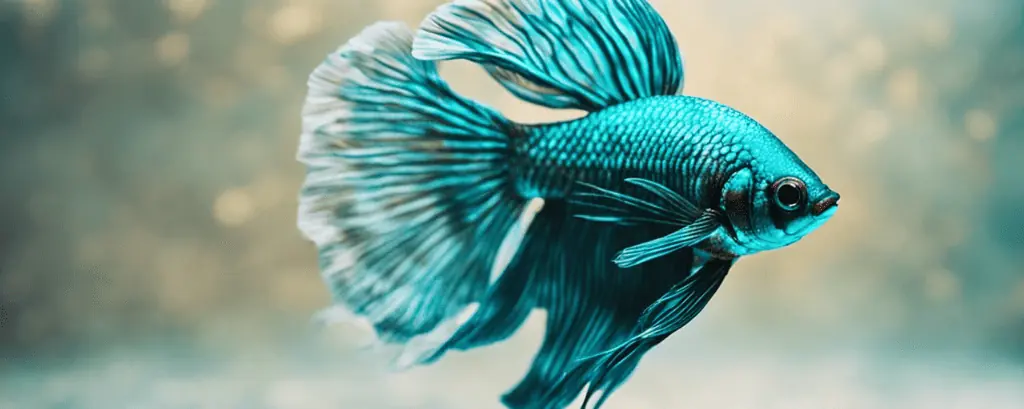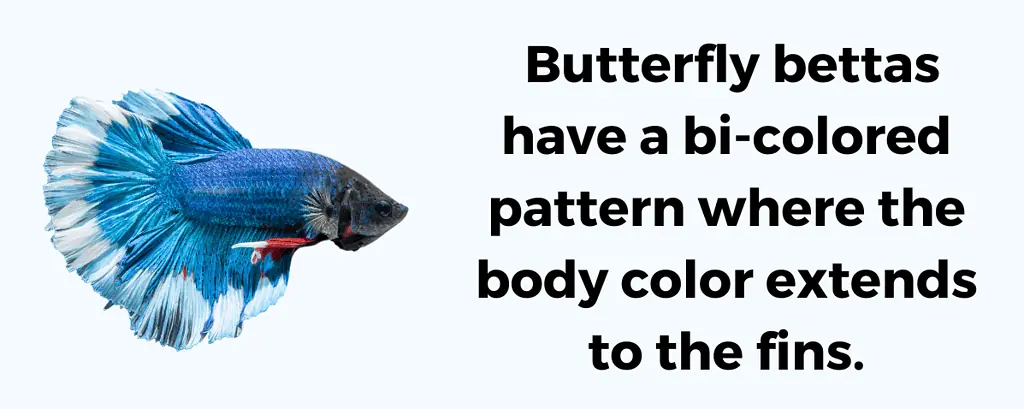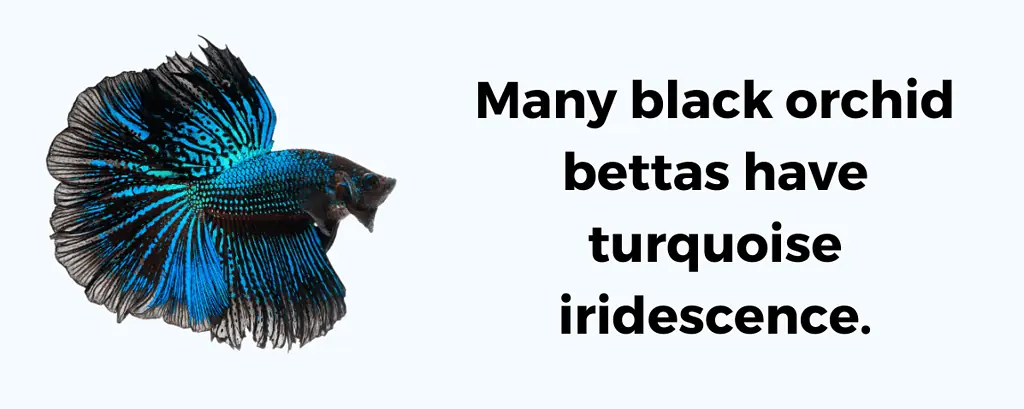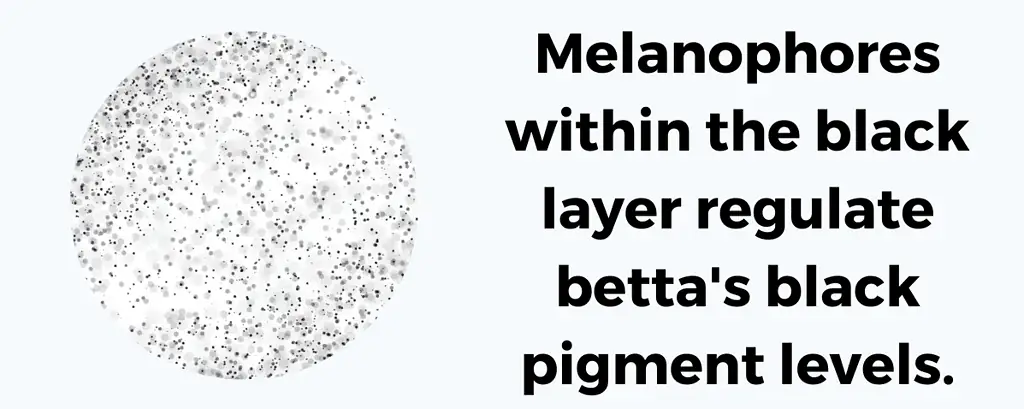Turquoise is one of the most beautiful color variations in betta fish.
Betta fish enthusiasts seek out these stunning fish because of their unique coloration.
But finding a solid-color turquoise betta is a difficult task.
Multi-color bettas with turquoise streaks or spots are more common.
A turquoise betta must have the right balance of blue and green pigments for its unusual color.
So, what is a turquoise betta, and what are the genetics behind its striking appearance?
Table of Contents
What Is a Turquoise Betta?

The color of a turquoise betta ranges from a pale mint to a dark teal hue.
This shade range comes from the betta’s underlying base color.
If a betta has a white or pale body under its iridescent pigment, the turquoise color appears pastel.
These same iridescent pigments on a dark-colored body result in a turquoise color with a deeper tone.
A consistent color on a turquoise betta is rare. This is due to the nature of the iridescent color cells in a betta’s scales.
In bright light, these iridescent scales shift from blue to green colors.
The ideal turquoise color in a betta has more blue tones than green or yellow.
Turquoise bettas come in a wide variety of tail shapes, including:
- Veiltail
- Halfmoon
- Crowntail
- Delta tail
- Super delta tail
- Plakat
Descendents from the wild types of betta fish species may have the rare roundtail or spade tail.
Color Variations in Turquoise Bettas
Not all turquoise bettas have a solid body color.
Some turquoise bettas have bi-color patterns with different colors on the fins.
Turquoise also appears as an accent color in betta fish.
Turquoise Galaxy Koi Betta

The galaxy koi pattern produces spots of orange, white, and black on the body with hints of turquoise.
Some betta fish keepers even report their galaxy koi bettas turning into turquoise fish!
This color change happens because galaxy koi bettas carry the marble genes.
Marble genes are in a constant state of mutation. If you get a galaxy koi betta, you may see a drastic change from its original colors over time.
Learn more about these colorful betta fish with our informative guide on koi bettas.
Turquoise Butterfly Betta

Turquoise is also a common color in the butterfly pattern type.
Butterfly bettas have a bi-colored pattern where the body color extends to the fins.
There is a distinct white or translucent band at the fin edges.
The ideal split of color on the fins of a butterfly betta is 50/50.
But this is rare, and most butterfly bettas have an 80/20 split fin color.
Turquoise Alien Betta

One of the most interesting color variants is the turquoise alien betta.
Turquoise alien bettas have a black or brown base color with a metallic iridescent pattern on their body and fins.
This spotted iridescent pattern covers the entire body, including the head. The fins have a distinct striped pattern.
Unlike other betta color patterns, female alien bettas have bright colors like males.
Alien bettas result from mixing domestic Betta splendens with wild betta types.
These types include Betta smaragdina and Betta mahachaiensis.
Along with turquoise, alien bettas come in true green, lavender, and copper varieties.
Most alien bettas are infertile, so breeding them is difficult. As a result, alien bettas are rare and more expensive than other color variations.
Black Orchid Betta

While not all black orchid bettas have turquoise iridescence, many do.
I felt they were worth a mention because of their striking appearance.
A black orchid betta has a black body and fins.
Its body has a layer of iridescent pigment in turquoise, steel blue, or royal blue.
This iridescence spreads to the fins and creates a butterfly-like pattern.
The contrast between the dark color and the iridescence makes the black orchid betta a stunning fish.
Black orchid bettas usually have long, flowing fins.
Crowntail and halfmoon tail types are the most common in this color variation.
Plakat types of black orchid bettas also have shorter tails and fins.
How Are Turquoise and Green Bettas Different?

A turquoise betta can look like a green betta until you place the fish under a bright light.
You may notice a subtle difference in their iridescent pigments once you get a close-up view of these two fish.
Turquoise bettas and green bettas both have green iridescent pigment cells.
But turquoise bettas also carry blue pigment cells.
When the green and blue pigment cells combine, they produce a turquoise color.
Are Turquoise Bettas Rare?

Turquoise is an unusual color in bettas. But turquoise bettas are not rare.
You may have a harder time finding a solid turquoise betta than a multi-color betta.
Solid-colored bettas are not as popular as multi-colored or bi-colored varieties.
This is why many breeders focus on creating wild color variations over solid colors.
Betta fish with turquoise markings are also found in the wild, such as:
- Betta smaragdina
- Betta mahachaiensis
- Betta stiktos
Iridescence in wild bettas is usually limited to the fin rays and small spots on the body.
Pure turquoise bettas do not exist in the wild.
Turquoise iridescence can appear on any base color in bettas.
Many color lines carry some degree of iridescence.
Breeders introduce the iridescent trait into a color line when improving the finnage of their stock with long-finned iridescent bettas.
Once iridescence is introduced into a color line, breeding it back out is challenging.
The Average Cost of a Turquoise Betta

Turquoise bettas have an average price range between $20 to $30.
The tail type and coloration of a turquoise betta affect its price.
Betta fish tail types like the rosetail and over halfmoon are the rarest and most expensive.
Solid turquoise bettas without flaws can cost more than common multi-color betta varieties.
You likely won’t find many turquoise bettas at your local pet store.
However, several online breeders sell turquoise bettas.
When buying a turquoise betta online, you must budget for the shipping costs.
Two-day shipping costs around $15, and overnight shipping is about $40 for most regions.
Overnight shipping is the best option because it reduces the amount of stress for the betta.
Always read a breeder’s shipping policies and check if they offer a live-on-arrival fish guarantee.
This guarantee usually provides you with a refund or exchange if your betta dies during shipping.
Reading an online betta breeder’s reviews is also a good idea.
These reviews can help you decide if a breeder is reputable.
If you have doubts about buying a betta from an online breeder, do not buy from them.
The Breeding History of the Turquoise Betta

The normal iridescence found in wild bettas is usually turquoise.
Experienced Betta fish experts worked for years to perfect the turquoise color in the Betta splendens species.
A betta must have the right combination of pigment cells for a turquoise color.
Turquoise bettas must not have too much green or blue pigmentation.
To help you understand turquoise bettas better, we will explain the color layers and genetics in detail.
Betta Fish Color Layers Explained
Domestic betta fish have four color layers in the following order:
- Iridescent (Top)
- Black
- Red
- Yellow (Bottom)
In wild bettas, the red layer comes before the black layer.
Iridescent Layer
The iridescent layer controls the amount of blue pigment in a betta.
This layer contains pigment cells called iridocytes.
Iridocytes come in three colors:
- Turquoise (green/blue)
- Steel blue (pale blue)
- Royal blue (dark blue)
Wild bettas have normal iridescence. This means the iridescent pigment cells only appear as streaks or spots on the body and fins.
Selective breeding created a mutated gene called spread iridescence.
The iridescent pigment cells cover the entire body and fins in spread iridescence.
Since iridescent pigment cells are in the top color layer, they affect the appearance of pigments in the lower color layers.
Black Layer

The black layer contains melanophores, which control the amount of black pigment in a betta.
This layer also contains Cambodian and blonde genes.
Cambodian genes give a betta a pale or flesh-colored body with colorful fins.
Most Cambodian bettas have red fins, but others may have blue or green fins.
Blonde genes reduce the density of black pigment and create pastel or washed-out colors.
Red Layer
The red layer has pigment cells called erythrophores.
Erythrophores control the amount of red pigment in betta fish.
Reduced red pigment cells limit red colors to the fins.
Extended red pigment cells create a red color on the body and fins.
The red layer also contains the gene for variegated fins.
Variegated fin genes produce the butterfly pattern in a betta’s tail and fins.
Yellow Layer
The yellow layer contains pigment cells called xanthophores.
Xanthophores do not control the amount of yellow coloring in a betta.
Yellow bettas are the result of the mutated non-red gene.
Instead, the yellow layer controls the amount of opaque pigment cells.
A high opaque factor gives a betta’s scales a white, powdery appearance.
A betta’s body and fins are translucent without opaque pigment cells.
They call this type of betta fish a cellophane betta.
Turquoise Betta Fish Genetics

Breeding two turquoise bettas produces 100% turquoise offspring.
Likewise, breeding two steel blue bettas results in 100% steel blue offspring.
Turquoise and steel blue pigment cells are not dominant over each other.
Instead, they combine and create a new color: royal blue.
Breeding a turquoise and steel blue betta produces 100% royal blue offspring.
Since royal blue is a combination of turquoise and steel blue, you get a different mix when breeding two royal blue bettas:
- 25% turquoise
- 50% royal blue
- 25% steel blue
Crossing turquoise with royal blue usually results in 50% turquoise and 50% royal blue offspring.
A true turquoise betta has the following genetics:
- Non-metallic genes from a wild betta
- Turquoise iridocytes
- Spread iridocytes


